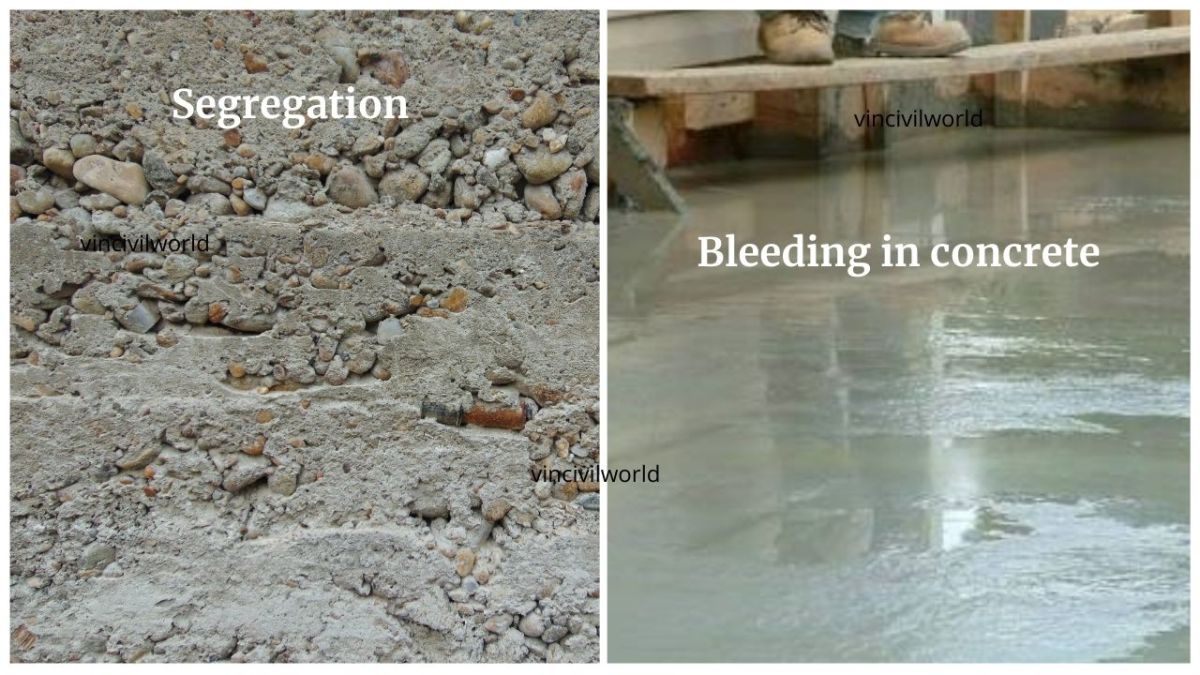Bleeding of Concrete Leads of Which of the Following
Uniformity of the concrete is hampered. In the process of bleeding the accumulation of water creates a water voids and reduces bond between the aggregate and cement paste.

Bleeding Of Concrete Its Causes Reasons Effects Prevention Civil Sir
Bleeding is responsible for causing permeability in concrete.

. Concrete loses its homogeneity which results in weak and porous concrete. Bleeding isnt always bad. The Prime factor for bleeding in concrete is the high dosage of Water cement ratio.
Effects Of Bleeding in concrete. Oh yes its bleeding water. Bleeding in concrete is caused when surplus water rise to the surface when concrete is vibrated.
If the nail bleeding becomes a regular occurrence after you talk your dog out for a walk then there are some steps you can take to prevent it from happening. Penetrability happens in the concrete. Bleeding is responsible for causing permeability in concrete.
The presence of fine aggregates and higher water-cement ratio also lead to bleeding. Bleeding happens on the concrete surface specifically when the water cement ratio remains high. Bleeding of concrete causes high.
First you need to understand that a dogs nail will get trimmed whenever the are walking on hard surfaces like concrete floors. It delays the surface finishing in pavement construction. The bleed water brings with it a small amount of cement and fines.
Bleeding causes the formation of a porous weak and non-durable concrete layer at the top. Segregation is knocking on the door and free water very easily finds its way to the surface due to its lower density in comparison with the other elements of the mix. This upward movement of water also carries fine particles of cement with it.
In the process of bleeding the accumulation of water creates a water voids and reduces bond between the aggregate and cement paste. Bleeding in concrete is one of the concrete related problems. As far as safety is concerned water that accumulates below the reinforcing bars reduces the bond between the reinforcement and concrete.
Use of air entraining admixtures can also reduce the bleeding in. It reduces the bond between the reinforcement and concrete when water accumulates below reinforcing bars. Some bleeding is normal but excessive bleeding can be problematic.
Due to bleeding pumping ability of concrete is. Bleeding also called hemorrhage is the name used to describe blood loss. Almost all freshly placed concrete bleeds.
The cconcrete is bleeding. It makes the concrete permeable. Some bleeding is normal but excessive bleeding can be problematic.
Influence of bleeding. A higher ratio can lead to excessive bleeding. Segregation is the phenomena in which heavy aggregate particles settles down due to settling of heavy particles water rises up to the surface and forms a layer.
A higher rate of the water cement ratio can lead to excessive bleeding and if evaporation of water from the surface of the concrete is faster than the bleeding rate plastic shrinkage cracking may result. The water bleed from the fresh concrete mix is likely to accumulate below the aggregate which creates water voids and reduces the bond between the aggregates and the paste. It lowers the water-cement ratio and densifies the concrete.
Bleeding ordinarily occurs in the wet mix of concrete. The presence of fine aggregates and higher water cement ratio also lead to bleeding. This phenomenon occurs when the aggregates tend to sit on the bottom watch out.
The bleeding rate depends on the type of cement used and the amount of fine aggregate. The properties of cement are not an only sole factor influencing the bleeding of concrete. Prevent Nail Bleeding in the Future.
Answer 1 of 2. The bleeding in concrete is not harmful if the rate of evaporation of water is equal to the rate of bleeding. Type of cement used and quantity of fine aggregate.
It is mostly observed in a highly wet mix and badly proportioned concrete ingredientsFol. Bleeding can be reduced by adopting the following measures. Bleeding in concrete is the occured due to the segregation separation of the constituent materials of concrete in the firm of coarse aggregate separation the paste separation and water separating out in the concrete mix as a form of plastic state in which heavy aggregate particles settle down due to settling of particles water rises up to the top of freshly concrete surface.
Bleeding in fresh concrete refers to the process where free water in the mix is pushed upward to the surface due to the settlement of heavier solid particles such as cement and water. Bleeding - Bleeding is defind as the apperance of water on the surface of concrete after it has consolidated but before it is set. Such particles are left on the surface of the concrete casting after the water has evaporated.
Bleeding offers the following adverse effects - 1. How to reduce bleeding in concrete. By adapting the following methods bleeding can be reduced.
A higher rate of the water-cement ratio can lead to excessive bleeding and if evaporation of water from the surface of the concrete is faster than the bleeding rate plastic shrinkage cracking. The tendency of water to rise to the surface of freshly placed concrete is called bleeding. This video shows the bleeding in concrete.
When we pour the fresh concrete in any structural member then after some short time the water comes to the surfac. But concrete that bleeds too fast or too long can cause a number of problems. The way you work that bleed water can affect the durability of your products.
It also increases the permeability of concrete. A weak layer of laitance is formed and as being porous and not watertight it will lead to poor bond for. Causes of bleeding in concrete.
Bleeding in fresh concrete refers to the process where free water in the mix is pushed upward to the surface due to the settlement of heavier solid particles such as cement and water. Segregation - Segregation is defind as the sepration of the consituents of a homogeneous mixture of concrete. Higher water-cement ratio weakens concrete and leads to excessive bleeding.
Segregation is the main cause of bleeding in concrete. Bleeding in Concrete Effects of Bleeding on Concrete. Bleeding can be easily identified in the field by the appearance of a thin layer of water in the top surface of freshly mixed concrete.
The main causes of bleeding in concrete mix is as follows. Even if bleeding isnt excessive finishing concrete at the wrong time causes a different set of bleeding-related problems. High water cement ratio causes bleeding.
Segregation is the cause of bleeding in the concrete mix. Shrinkage cracks may occurs in concrete due to excess mortar in the top layer of fresh concrete or evaporation of water from the fresh concrete more than that of bleeding rate. It can refer to blood loss inside the body called internal bleeding or.
Bleeding is one form of segregation where water comes out to the surface of the concrete being lowest specific gravity among all the ingredients of concrete.

Concrete Bleeding National Precast Concrete Association

Segregation And Bleeding In Concrete Types Causes And Remedies Vin Civilworld

Comments
Post a Comment